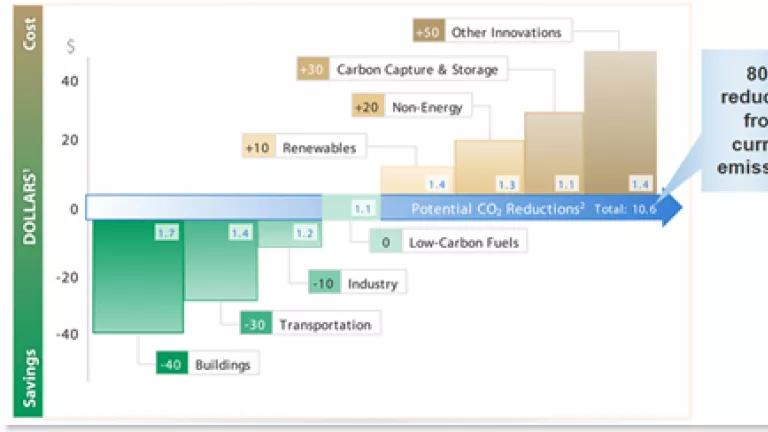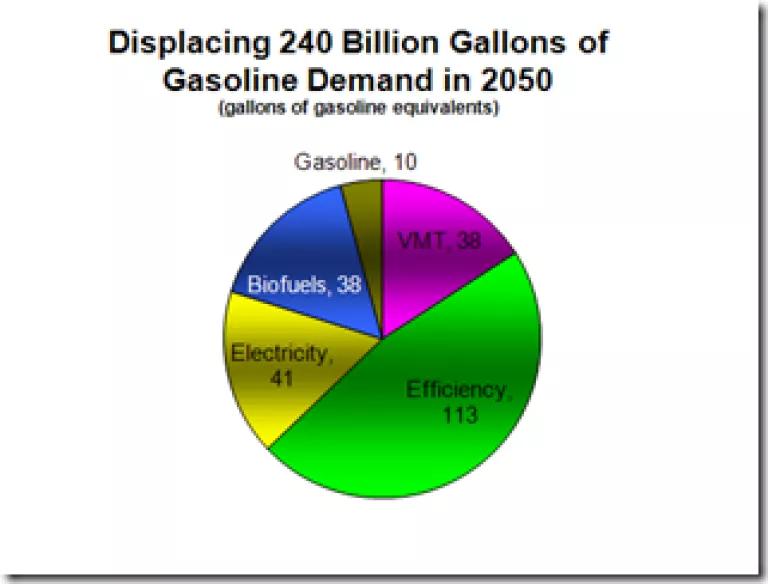
Two weeks ago, I wrote about some misguided claims by David Pimentel and what I saw as overly broad and overly pessimistic views on biofuels from cellulosic biomass by Tom Philpott. Last week, Tom paid my blog here a visit and posed some reasonable questions and invited folks to what will hopefully be an informative debate on his blog on Grist. So let's have at it.
Rather than start with our points of disagreement, I'd like to start with some points that I hope that Tom and many of our readers will agree with because in the end these points are the reasons that I and NRDC continue to struggle with biofuels despite all the challenges and controversies. First and foremost, we need to stop global warming by stabilizing atmospheric GHG concentrations at the equivalent of less than 450 ppm CO2. For us here in the US, this means reducing our GHG pollution by 80% below 1990 levels by 2050. Furthermore, we have to do this in a way that ensures that the cure is not worse than the disease. In other words, we have to try to stop global warming while also addressing our other major environmental and social challenges and we can't afford to exacerbate those challenges.
This is a daunting challenge and our current path is not going to get us there. We cannot extrapolate forward our current rates of consumption and our current rates of technological improvement and expect to get to a sustainable future. We need important technological innovations and changes to our policies. What's more, there is no single technological innovation that will magically put us on a path to sustainability. We need innovations and changes across our economy.
The good news is that even analysts as conservative and mainstream as McKinsey and Co. believe we can be on the right path by 2030 at little or no cost to our economy as long as we start now. However, it takes aggressive action and requires a wide array of technologies.
1 Constant 2007 dollars
2 Billions of tons of CO2 equivalent eliminated per year relative to business as usual projections
Source: NRDC analysis partially extrapolated from McKinsey report; see www.marketinnovation.org
And this is probably even more true in the transportation sector as it is in the rest of the economy. Our current path domestically and internationally is wildly unsustainable with demand growing and efficiency deteriorating (until our recent victory on increasing CAFE). As a result, gasoline demand is expected to roughly double in the US by 2050 under BAU.
Up to here, I'm hoping that we're all mostly in agreement.
Our options to bend the GHG emissions curve associated with transportation are fairly straight forward: improve the efficiency of our vehicles, change our mode of transport to more efficient ones, travel less, and put lower carbon fuels into our cars, trucks, planes and other forms of transport. When we look at trying to reduce the transportation sector's emissions by 80% from 1990 levels by 2050 through these options, it's not easy to make the numbers add up. In the light-duty vehicle sector, one of the most aggressive scenarios that we have analyzed relies on improving our vehicle fuel economy three fold, cutting our VMT 20% and ramping up the use of electricity to where it drives 50% of all VMT. (For modeling purposes, we assume all vehicles are flex-fuel plug-ins hybrids that use electricity for 50% of their driving and E85 for the rest. To be clear, we don't care if it's this configuration of vehicles and we certainly don't care what fuel molecule ends up being used.) Even under this scenario we still see the need for about 60 billion gallons (on an ethanol basis) of truly low-carbon biofuels (e.g. about an 80% reduction from gasoline lifecycle GHG emissions) to provide about 9 1.4 gigatonnes of CO2 equivalent GHG emission reductions. And even after that, the transportation sector is just barely carrying its weight in terms of providing emissions reductions.

(Note: 38 billion gallons on a gasoline equivalent basis equals 58 billion gallons on an ethanol basis because of the lower energy density of ethanol.)
What happens if these emissions reductions don't materialize from biofuels? Nothing, if we can get them from some other part of the transportation sector, but of course every other option faces technical and political challenges as well. Whether it is battery technologies, entrenched interests addicted to sprawl, or the challenges to rapidly scaling up renewable power and the associated transmission, no pathway is a technically and politically sure thing.
So what if these emission reductions don't materialize from the transportation sector at all? Again, nothing as long as we get it from some other sector, but again there are challenges everywhere we look. The bottom line is that we need lots of solutions and we need them all to provide as much pollution reduction as they can in a broadly sustainable way.
And that is why NRDC continues to struggle with biofuels. Not because I like ethanol or we like controversial and complicated issues, but because we're committed to stopping catastrophic climate change. To do that we can't afford to give up trying to figure out how to make potentially significant solutions work.
I'm going to leave off at this point and see if we're in agreement on the premise that we have to struggle hard to figure out how to make potentially significant solutions to the climate challenge work. There are perfectly valid questions about whether biofuels can technically and politically be made to be a solution (and I look forward to discussing them), but I want to make sure that we come to these questions with a shared sense of urgency around trying. We cannot afford blind optimism, but we must share a belief that we can and must over come enough of the technical and political challenges to the solutions to global warming to save our environment from ourselves.

